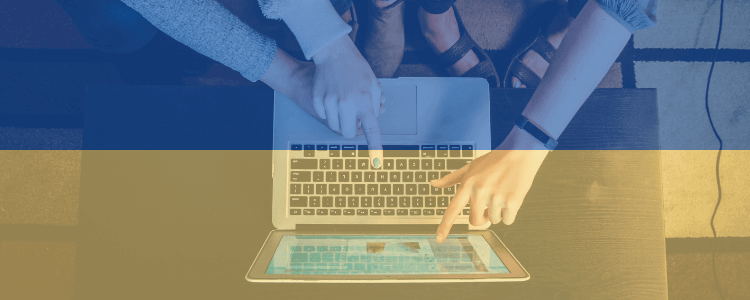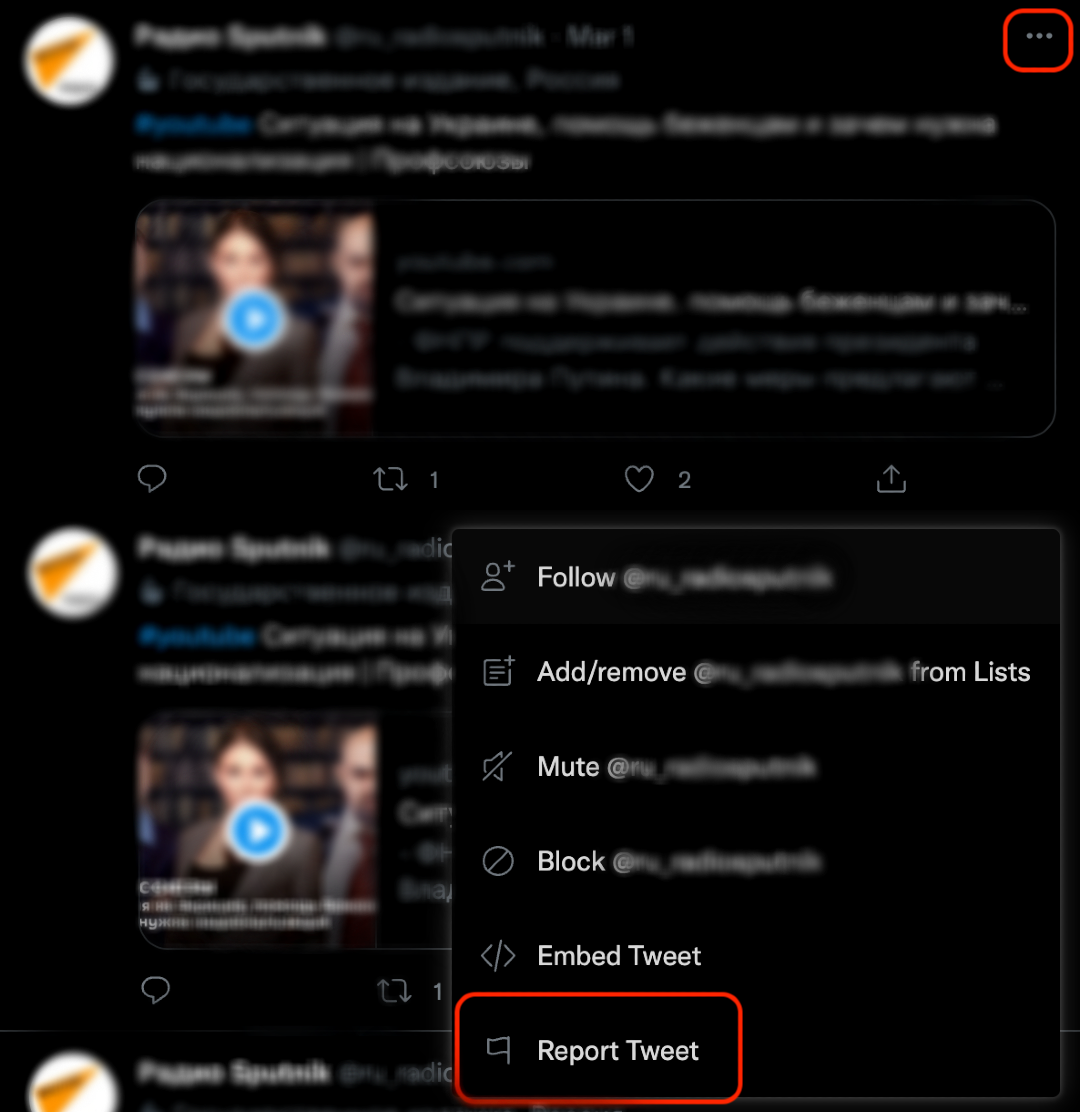How to Spot Disinformation Online? A Short Guide to Detecting Bots, Trolls, and Fakes
Because now almost everyone can have access to the Internet, there are many people (or things) that perhaps shouldn’t. This situation creates endless possibilities for spreading misinformation, fake news, and harmful propaganda. Here are a few things you should know while browsing the web to protect yourself from false information.

- What’s this article about?
- Why does it matter?
- Follow only trusted sources
- Be careful reading news on social media
- Verify influencers and activists
- Pay extra attention to emotional messages
- Lengthy analyses are much more reliable
- Fact-checking sites are your friends
- Don’t believe every video or photo you see
- Read full articles, not only headings
- How to spot bots and trolls spreading information
- Our commentary
What’s this article about?
Now, don’t get me wrong. I don’t want to tell you this and that information is fake, or please report this and that bot to Twitter. I want to give you straightforward advice on spotting potential fake news or a bot spreading misinformation.
I think we can all agree that there’s a lot of potentially harmful content on the Internet. It’s very easy to become a victim of false propaganda and unintentionally spread fake news. Especially in times of crisis, we can observe a massive spike of misinformation, often shared by people who are not aware of that. This happens when emotions are stronger than common sense. It’s understandable.
Because it is so easy to fall into a spiral of negative emotions and unintentionally spread false information, we prepared a few tips that might help you to identify fakes, bots, and trolls online.
Why does it matter?
To have a complete understanding of what’s going on, you should have access to objective information so you can develop your personal opinion. Some news can be biased and show only a fraction of what’s actually happening. Others are totally untrue, and their purpose is to start a panic, change opinions on some matters, or cause a distraction.
You need to be aware of how some mechanisms work so you don’t become a victim of misinformation and spread false facts.
Follow only trusted sources
The first, and perhaps the most important, advice is – to have a list of trusted sources and consume your information only there.
Popular information services like BBC News, CNN, or Huffington Post are less likely to spread unconfirmed information than some unknown sites. They too can be biased, but they have a huge reputation to protect, and they always try to check sources to present the most accurate version of what’s happening.
Although, even sites such as BBC can sometimes unintentionally spread misinformation. Such was the case during a current war in Ukraine when the broadcasting company shared news about non-Ukrainian refugees escaping the war zone that might have been harmful for Poland. The tweet was later corrected.
Be careful reading news on social media
As much as I like Twitter, it can be a nasty case of misinformation spreading. Tweets are relatively short and rarely backed by sources and confirmations. It’s an excellent tool for bots and trolls to share fake news.
The same goes for other social media. It’s effortless to post a comment saying, “I just heard that xxx happened. I have no confirmation in the news, but my source is very reliable”. Is this message to be trusted? Well, anybody can say anything on the Internet. It might be accurate, but it also might be just an Internet troll that wants to stir up some confusion.
Always, ALWAYS, check reliable sources of information before you forward the news to somebody else. It’s very easy to spread misinformation but very hard to take it back. Fake news starts to circulate, can be very emotional (and thus more likely to be shared), and cause panic. The correction is not that interesting, not emotional, and much less likely to go viral.
This is also problematic when celebrities share information. It brings us to the next part.
Verify influencers and activists
In today’s world, a lot of information comes from our favorite celebrities, influencers, and activists. And that is okay, provided that you check the news. There are probably some people that we can trust more, but remember that many Instagram influencers can be easily bought.
If you notice a sudden change of opinion or a person that usually abstains from political news engages heavily in some topic, make sure what they say is not dramatically different from what the official sources and popular news services announce.
It’s not that they might have become paid trolls to spread fake propaganda – their accounts could have been easily hacked too.
I’m not saying that you should never trust influencers and celebrities, but unless you trust them 100%, you might want to do some fact-checking on your own. Fortunately, there are a lot of websites that verify viral news.
Pay extra attention to emotional messages
Fake news, propaganda, and misinformation rely heavily on emotions. They intend to raise powerful emotions (positive or negative) so that someone would be more willing to share the info. Objective reports with lots of sources and confirmations may seem dull.
I wrote about short tweets before – it is so easy to just repost a message on Twitter. Your likes may be visible to your followers as well. All it takes is one emotional tweet that something is happening right now, and thousands of people can see it before it’s verified.
I’m not saying everything emotional is not valid, but before you like or retweet (this applies to other social media too – observe what you share on Facebook, Linkedin, or via chats like Whatsapp or Telegram), make sure you know the source of information. If this is a blogger, politician, or activist, you trust and know they are not prone to lying and do their own fact-checking, you are probably safe. But if this is an unknown profile, take what they say with a grain of salt.
Lengthy analyses are much more reliable
As I said before – it is easy to manipulate the receiver with a short emotional message. Still, a deep analysis with links to sources, quotes from experts, and not-so-heated sentiment are much more valuable.
Firstly, they look at the problem from a broader perspective. Such analysis omits fewer facts and shows more aspects of the issue.
Secondly, they usually include experts’ opinions, and that means you absorb the knowledge from someone who studied the problem before and has years of education to back up what they have to say.
Last but not least, even if they are opinion-forming, they at least are based on facts, not emotions.
Fact-checking sites are your friends
Even though many people try to discredit them, there are a lot of fact-checking websites that verify viral news circulating on the Internet.
If a piece of information seems too good to be true, is very emotional, attacks someone, that should be a red flag for you before you start spreading harmful materials. Always fact-check everything that comes from an unknown and unreliable source.
Here are some of fact-checking websites you can try:
Don’t believe every video or photo you see
Sure, a photo is a piece of much better evidence than some random tweet or a Facebook comment, but you should know various sources use them in the wrong context to spread propaganda.
Videos and photos can also be easily fabricated.
Read full articles, not only headings
Nowadays, many sites rely on clickbait articles to get as many visitors as they can. That is kind of annoying but may sometimes backfire. Because many people read only headings, they might not get the complete picture.
For example, there was a race between two athletes. Let’s call them Josh and Adam. Josh came first and Adam second, and they both had a similar time. These two statements are factual:
“Adam’s results were perfect. He came second.”
“Adam performed poorly. He was last.”
See? Based on only those two statements, you might think Adam is a great runner or a bad one. Only when you know the whole story and context will your opinion not be biased.
How to spot bots and trolls spreading information
Sometimes it’s tough to distinguish a bot or a paid troll from a person unwillingly spreading misinformation because they believed it. A few factors, though, may help you spot a bot designed to spread harmful propaganda.
Bear in mind that artificial intelligence these days can write whole articles, and they are sometimes indistinguishable from those written by a real person. Gone are the days when AI texts were full of grammatical errors and weird sentence structures.
First of all, check the account name. Primitive bots often have a string of numbers or random letters in their profile URL. That doesn’t automatically say the account is fake, but it is a red flag.
Second thing worth checking is how old the account is. Bots usually have a short life as they are banned when reported. New profiles with small number of followers are definitely suspicious.
See what they have been talking about recently. Some matters are obviously more important so that people might be talking only about one thing during a short period of time. But if a person consistently discusses only one thing and uses similar sentences and wording in each post, that might be a profile set up to spread propaganda.
Fake trolls and bots often use extreme wording, emotional messages, and spread panic. If you see a post that might be polarising, be very cautious before you share it further.
If you think this might be a bot or a troll, the best thing to do is to report it to the moderators. Don’t react under the post, don’t comment, don’t try to discuss. This will only help in reaching a wider audience.

Our commentary
Even though there are numerous ways to spot fake news and misinformation, some stories are hard to verify and circulate the Internet shared by those who are not aware. Hopefully, with our tips you will be able to to tell the difference between a reliable source and propaganda.
In the context of the latest events, Brand24 stands with Ukraine and we are deeply concerned about the Russian invasion. As a Polish company, where the war is happening just across our east border, we feel obliged to help those in need any way we can help.
We use our tool for a campaign to fight fake bots spreading misinformation and work with dozens of verified organizations that do the same. Together, we are able to quickly identify harmful content and report the accounts. Additionally, we involve personally and as a team to organize help, transportation, and material support.





![What is Social Media Monitoring? Best Practices and Powerful Tools [2022]](https://brand24.com/blog/wp-content/uploads/2017/11/rockets2-min-640x300.jpg)
